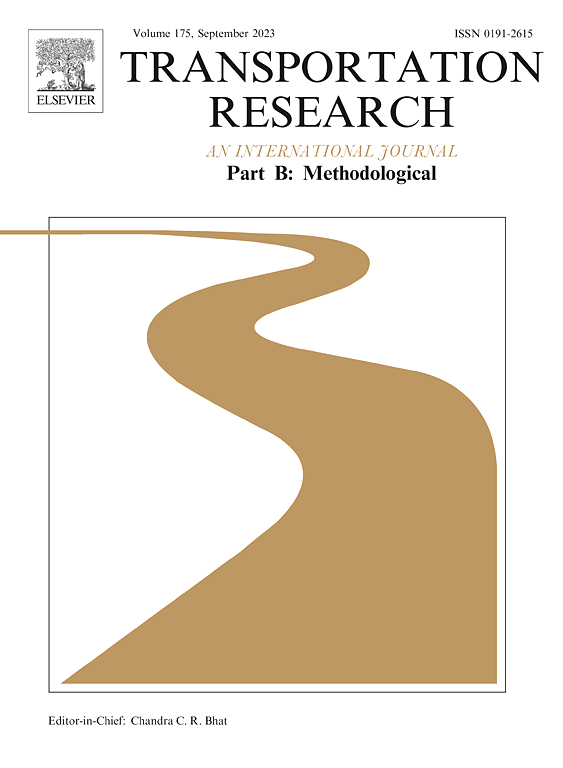A systematic review of node models for macroscopic network loading of traffic flows
IF 6.3
1区 工程技术
Q1 ECONOMICS
引用次数: 0
Abstract
Node models in macroscopic network loading procedures are used to distribute competing flows arising at motorway ramps, junctions, and intersections, influencing congestion and queuing delays. Despite decades of research on macroscopic node model development, a comprehensive literature review on their characteristics, categories, emerging trends, and further research opportunities does not yet exist. This study fills this gap by conducting a systematic literature review on the node models in macroscopic network loading frameworks. We identify representative characteristics of node models and then systematically classify and interpret those characteristics across existing node model studies present in the literature. We propose six general principles for node models and explore five extension categories characterising additional features. This paper makes two contributions to the field. Firstly, it provides a comprehensive classification of node model research, grounded in the proposed principles and extension categories. This classification is substantiated by relevant references and culminates in the development of a node model classification table. Secondly, it identifies future research directions and opportunities, providing guidance and insights for researchers and practitioners engaged in the study of macroscopic node models.
交通流宏观网络负荷节点模型的系统综述
宏观网络加载过程中的节点模型用于分配高速公路匝道、路口和交叉路口产生的竞争流,影响拥堵和排队延迟。尽管对宏观节点模型发展的研究已经进行了数十年,但尚未对其特征、类别、新兴趋势和进一步研究机会进行全面的文献综述。本研究对宏观网络加载框架中的节点模型进行了系统的文献综述,填补了这一空白。我们确定节点模型的代表性特征,然后系统地分类和解释文献中现有节点模型研究中的这些特征。我们提出了节点模型的六个一般原则,并探索了描述附加特征的五个扩展类别。本文对这一领域有两个贡献。首先,基于提出的原则和可拓范畴,对节点模型研究进行了全面的分类。这种分类得到了相关文献的证实,最终形成了节点模型分类表。其次,确定未来的研究方向和机会,为从事宏观节点模型研究的研究者和实践者提供指导和见解。
本文章由计算机程序翻译,如有差异,请以英文原文为准。
求助全文
约1分钟内获得全文
求助全文
来源期刊
CiteScore
12.40
自引率
8.80%
发文量
143
审稿时长
14.1 weeks
期刊介绍:
Transportation Research: Part B publishes papers on all methodological aspects of the subject, particularly those that require mathematical analysis. The general theme of the journal is the development and solution of problems that are adequately motivated to deal with important aspects of the design and/or analysis of transportation systems. Areas covered include: traffic flow; design and analysis of transportation networks; control and scheduling; optimization; queuing theory; logistics; supply chains; development and application of statistical, econometric and mathematical models to address transportation problems; cost models; pricing and/or investment; traveler or shipper behavior; cost-benefit methodologies.

 求助内容:
求助内容: 应助结果提醒方式:
应助结果提醒方式:


